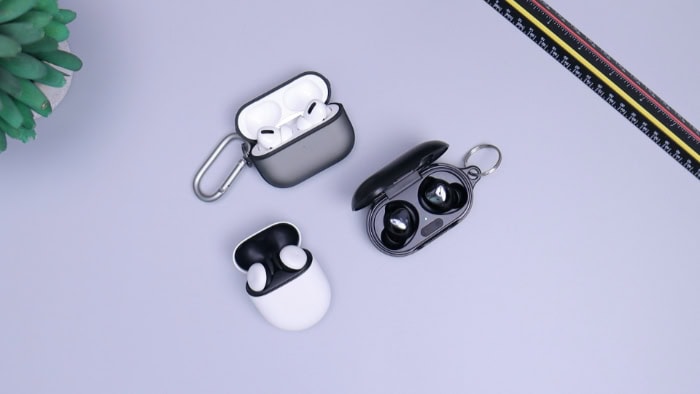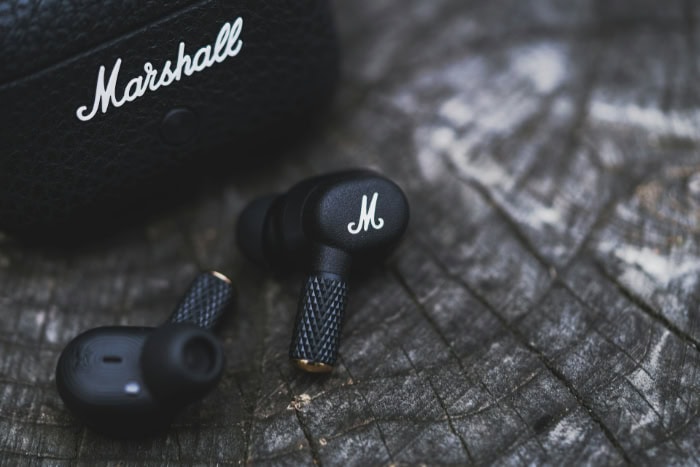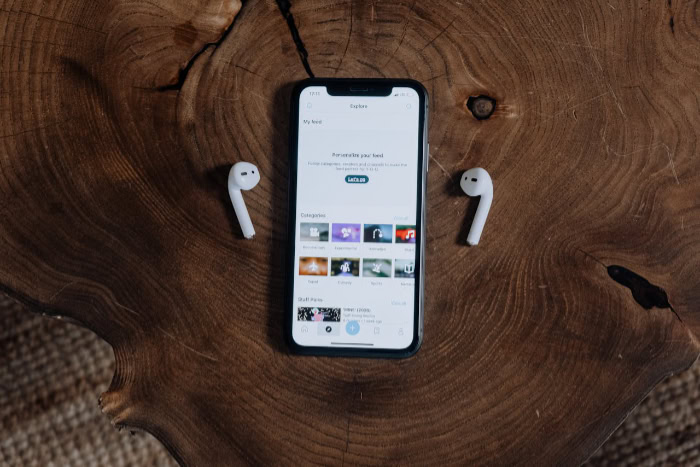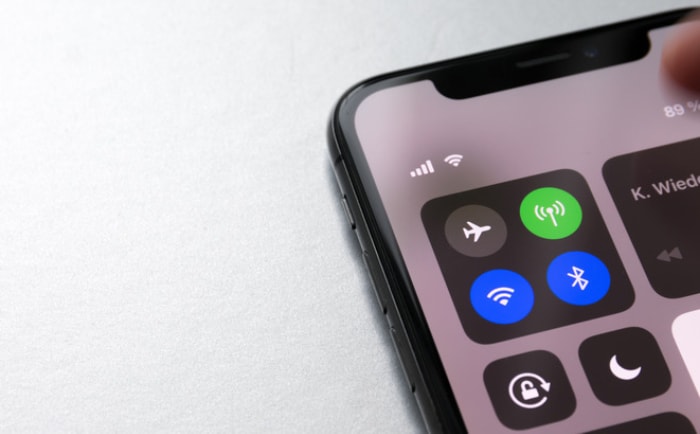Are Wireless Earbuds Worth It? Everyday Benefits You’ll Love

The rapid rise of wireless earbuds has shifted the way we experience music, calls, and daily convenience. Sleek, portable, and packed with modern features, they’ve become more than just a listening device—they’re a lifestyle accessory.
From jogging without tangled cables to effortlessly pairing with multiple devices, these tiny gadgets promise big advantages.
But are they worth the hype, or do they fall short compared to their wired counterparts? With considerations like sound quality, battery life, and cost, making the leap to wireless can feel like a balancing act.
For those curious about whether wireless earbuds are a smart investment or just another trend, this breakdown of their pros, cons, and real-world performance will help you decide if they’re the right fit for your needs.
Convenience and Mobility Benefits
Wireless earbuds have redefined what it means to stay connected on the move. Their compact, lightweight design eliminates the mess of cables, offering a sense of freedom and organization that wired headphones simply can’t match.
For those who spend a lot of time juggling tasks, traveling, or working on the go, wireless earbuds provide seamless functionality, making them a go-to choice for modern lifestyles.
Let’s look at how these devices excel in terms of convenience and mobility.
Freedom of Movement During Activities
One of the standout benefits of wireless earbuds is the freedom they provide during all kinds of activities. Whether you’re working out at the gym, running outdoors, or even doing household chores, there’s no need to worry about tangled cords getting in your way or yanking your device off a table.
The lack of wires also means you can move more naturally, focusing on your activity without any limitations. Many wireless earbuds are designed with secure fits and sweat-resistant materials, ensuring they stay in place even during intense workouts.
This freedom of movement has made wireless earbuds an essential companion for active individuals.
Cable-Free Organization
Dealing with tangled headphone wires is a frustration most people know all too well. Wireless earbuds remove this issue entirely, offering a clutter-free alternative that saves time and eliminates small daily annoyances.
Their compact form ensures they’re easy to store in your pocket, bag, or charging case without worrying about knots or damage. For those who value organization, this simple shift can make a big difference.
It’s not just about tidiness—it’s about convenience, and wireless earbuds excel in that regard.
Device Switching Capabilities
In a world where many people use multiple devices daily, from smartphones to laptops and tablets, wireless earbuds make switching between them quick and easy. Thanks to Bluetooth technology, most earbuds allow for seamless pairing with different devices.
Some models even support multi-device connections, meaning you can take a call on your phone and return to listening to music on your laptop without skipping a beat. This ability to move effortlessly between devices enhances productivity and ensures you stay connected without interruptions.
Travel and Commuting Advantages
For frequent travelers or daily commuters, wireless earbuds are a game-changer. Their compact design makes them ideal for grabbing on the go, while features like noise cancellation enhance the experience of listening to music or podcasts in noisy environments like buses, trains, or airplanes.
With no cables to snag on your bag or jacket, they also reduce the hassle of getting caught up in wires during transit. On top of that, the wide variety of styles and fits ensures there’s a comfortable option for everyone, even during long commutes.
From improving the flow of daily activities to enhancing multitasking and travel experiences, wireless earbuds bring a new level of convenience and mobility to users. Their ability to blend practicality with ease of use makes them an attractive choice for anyone seeking a hassle-free way to enjoy audio on the move.
Sound Quality and Technical Performance

One of the most frequently debated aspects of wireless earbuds is their sound quality and technical performance compared to traditional wired headphones. With advancements in Bluetooth technology and improved hardware, wireless earbuds have come a long way.
However, their performance can vary depending on factors like connectivity, latency, and codec support.
Audio Quality Comparison With Wired Options
When it comes to audio fidelity, wired headphones have traditionally held the upper hand. Their direct connection minimizes signal loss, offering a richer and more detailed listening experience, particularly for audiophiles.
However, wireless earbuds have made significant strides in bridging this gap. Premium models now rival wired options with enhancements like high-quality drivers and support for advanced audio codecs.
Wireless earbuds are well-suited for casual listening, providing balanced sound profiles with ample bass, clear mids, and crisp highs. While they may fall short in replicating studio-quality sound or exceptionally nuanced audio, most users will find the difference negligible for everyday use.
The convenience of wireless technology often outweighs the minor trade-offs in sound quality for non-audiophile listeners.
Bluetooth Connectivity Reliability
The reliability of Bluetooth connectivity is crucial for a smooth wireless audio experience. Modern wireless earbuds utilize advanced Bluetooth versions, which offer faster pairing, longer range, and improved stability.
They are typically designed to work seamlessly within a standard range of around 10 meters, allowing users to move freely without audio interruptions.
Although interference from walls or other devices can occasionally affect the signal, high-quality earbuds have features that mitigate these disruptions. Dual-channel Bluetooth and clever antenna positioning help ensure consistent performance during calls, when gaming, or while streaming.
These advances make wireless earbuds more dependable now than ever before.
Latency Considerations
Latency, or the delay between audio playback and what you hear, has been another hurdle for wireless earbuds, especially in activities like gaming or watching videos.
Early wireless devices often suffered from noticeable lag, but newer models have addressed this with the help of low-latency modes and faster codec technologies.
For casual use, latency is hardly noticeable, but for gamers or those requiring perfect synchronization between sound and visuals, it’s worth investing in earbuds designed specifically for low-latency performance.
Codec Support and Compatibility
The audio codecs supported by wireless earbuds play a significant role in their sound quality and performance. A codec compresses and decompresses audio data transmitted over Bluetooth, impacting everything from clarity to latency.
Standard codecs like SBC are widely compatible but often lack the audio depth offered by more advanced options like AAC or aptX.
High-end earbuds frequently support multiple codecs, including LDAC or aptX HD, for enhanced sound quality. However, the effectiveness of these codecs also depends on your device’s compatibility.
For instance, iPhones prioritize AAC, while many Android devices excel with aptX. Selecting earbuds that match your device’s ecosystem ensures an optimized listening experience.
The technical evolution of wireless earbuds has brought them closer than ever to competing with wired headphones. With reliable Bluetooth connectivity, support for diverse codecs, and solutions to minimize latency, they continue to improve in areas that were once seen as drawbacks.
These factors make wireless earbuds a strong performer for both casual and demanding users.
Battery Life and Power Management

Battery life and power management are crucial aspects that can significantly influence your experience with wireless earbuds. Unlike traditional wired headphones, wireless earbuds rely on internal batteries, meaning their usability is directly tied to how long they can hold a charge.
Manufacturers have worked to improve battery efficiency, quick charging, and the functionality of charging cases to meet the needs of users with busy and active lifestyles.
Average Listening Time Per Charge
The listening time of wireless earbuds varies across models, but the typical range falls between 4 to 8 hours on a single charge. Premium models may even push beyond this, especially when features like noise cancellation are turned off.
While this might not seem like a full day of use, it's important to note that earbuds are designed for intermittent sessions rather than constant playback. For everyday activities like commuting, working out, or attending virtual calls, this level of battery life is generally sufficient.
However, users who frequently stream music or podcasts for extended periods may need to recharge throughout the day.
Charging Case Functionality
One of the standout innovations of wireless earbuds is the inclusion of charging cases. These compact cases not only store the earbuds safely but also provide multiple additional charges, often extending total usage time to 20 hours or more.
For example, if your earbuds offer 6 hours on a single charge, the case may allow you to recharge them two or three more times before needing to plug it in. This feature is incredibly convenient for travel or situations where outlets might not be easily accessible.
Many cases also display LED indicators to show their remaining battery life, helping users plan recharges effectively.
Quick Charging Capabilities
For users pressed for time, quick charging capabilities are a game-changer. Many wireless earbuds are equipped with technologies that allow for several hours of playback with just a short charge.
For instance, some models can provide an hour or more of listening time from a 10- to 15-minute charge. This feature ensures that even when you're running out the door, you won’t have to go without your earbuds for long.
Quick charging combines convenience with practicality, making it easier to keep your earbuds ready for use without long waiting periods.
Power Optimization Features
Modern wireless earbuds often include intelligent power optimization features to maximize their efficiency. These can include auto-pause functions, which suspend playback when an earbud is removed, and low-power modes that preserve battery life when the device is idle.
Additionally, some earbuds allow you to disable battery-draining features, like active noise cancellation, to extend playback time. These power-saving measures not only enhance usability but also reduce the frequency of recharges, allowing you to focus more on enjoying your audio and less on monitoring battery levels.
Comfort and Design Considerations

The design and comfort of wireless earbuds play a significant role in their overall appeal. These devices are worn for hours at a time, so their fit, weight, and durability directly impact how enjoyable they are to use.
Manufacturers have refined their designs to cater to diverse preferences, ensuring that the experience is both comfortable and practical for a wide range of users.
Ergonomic Fit Options
A good fit is essential for both comfort and performance, and modern wireless earbuds come in various shapes and sizes to accommodate different ear structures. Many models include multiple ear tip sizes made from silicone, foam, or rubber, allowing users to choose the option that best suits their ears.
This not only helps with comfort but also ensures a snug seal, which can improve sound quality and boost passive noise isolation.
Some earbuds are designed specifically for secure placement during activities like running or exercising, featuring adjustable hooks or fins to keep them in place. Others focus on a minimalist design without any extra attachments, providing a sleek and lightweight fit for all-day wear.
Whatever the preference, the ergonomic variety available today ensures most people can find an option that feels natural and comfortable.
Weight and Long-Term Comfort
The weight of wireless earbuds can significantly affect how comfortable they are during extended use. Heavier designs may cause fatigue or discomfort, especially if worn for long periods, while lightweight models are more likely to feel unobtrusive.
This is particularly important for users who rely on their earbuds throughout the day, whether for work, entertainment, or exercise.
Some earbuds are engineered to evenly distribute their weight, ensuring they don’t press too heavily on any part of the ear. Combined with the right ear tip size and material, even several hours of listening can feel effortless.
Long-term comfort is largely influenced by these thoughtful design details, which cater to practical, everyday use without causing strain.
Weather Resistance
Weather resistance is another important consideration for those who want wireless earbuds that can handle different environments. Many models are rated for water and sweat resistance, making them suitable for intense workouts or use in light rain.
This level of protection ensures that moisture doesn’t damage the electronics, allowing users to take their earbuds almost anywhere without worry.
The level of resistance is typically indicated by an IP (Ingress Protection) rating, which ranges from basic protection against sweat to complete shielding against immersion in water.
While not all users may require these features, they are particularly useful for those with active lifestyles or who use their earbuds outdoors in varied conditions.
Build Quality and Durability
Durability matters not only for physical aesthetics but also for the longevity of the earbuds. Well-constructed models often feature sturdy materials like reinforced plastics or aluminum that can withstand the wear and tear of daily use.
Compact and portable by design, wireless earbuds are frequently stored in pockets or bags, so they need to be resistant to impacts and scratches.
Higher-quality models also pay attention to smaller elements, such as secure hinges on charging cases and durable coatings to protect against sweat or grime. These details contribute to a product that performs well over time, offering lasting value for users who rely on their earbuds regularly.
Comfort and design are just as important as technological performance when choosing wireless earbuds. With advancements in fit customization, lightweight materials, weather resistance, and thoughtful construction, modern earbuds balance aesthetics with usability, ensuring they meet the needs of a wide audience.
Cost-Value Analysis

Wireless earbuds span a broad range of price points, offering options for budget-conscious buyers as well as those seeking premium, feature-packed models. When evaluating their cost, it’s essential to think beyond the initial purchase price and consider factors like maintenance, included features, and overall lifespan.
While some models may seem expensive upfront, they often deliver features and durability that justify their price over time.
Initial Investment Comparison
The upfront cost of wireless earbuds can vary significantly based on the brand, design, and features. Entry-level options are often priced affordably, offering basic functionality such as Bluetooth connectivity and acceptable sound quality.
On the other end of the spectrum, high-end models from well-known brands can cost several times as much, but they often include advanced capabilities like active noise cancellation, superior audio performance, and extended battery life.
It’s worth noting that budget earbuds may lack the refinement of premium models, both in build quality and technical performance. However, for casual users or those with simpler needs, the more affordable options can provide excellent value without breaking the bank.
Premium earbuds, though pricier, often cater to users seeking top-tier performance, enhanced comfort, and cutting-edge technology.
Long-Term Maintenance Costs
Maintaining wireless earbuds is generally straightforward, but there are some recurring costs to keep in mind. Replacing lost or damaged ear tips is a common expense, especially for users who exercise frequently or wear their earbuds for extended periods.
Some users may also face battery degradation over time, reducing the overall listening hours per charge. In rare cases, repairing or replacing a lost charging case can add to the total cost of ownership.
It’s important to choose earbuds from reputable brands that offer replacements and support. While premium models may cost more upfront, their higher-quality materials and better customer service can often reduce the need for frequent repairs or replacements in the long run.
Feature Premium Assessment
Wireless earbuds often come with a price premium for advanced features. Active noise cancellation, for instance, is a highly sought-after feature that can significantly enhance listening in noisy environments but is usually reserved for higher-priced models.
Similarly, earbuds with premium audio codecs, low-latency support, or multi-device connectivity options tend to command a higher price.
The inclusion of features like water resistance, customizable sound profiles, and intuitive touch controls can also push the cost higher. While these add value and improve usability, they may not be essential for every user.
It’s worth assessing your personal needs to decide if the extra cost is justified. For example, someone who only uses earbuds for casual listening may find simpler models perfectly adequate, while tech enthusiasts might appreciate the added functionality of more expensive options.
Lifespan Considerations
The lifespan of wireless earbuds depends on factors like build quality, battery durability, and user habits. Premium models typically last longer, benefiting from superior construction and better power management.
These earbuds often maintain their performance and reliability over several years if handled with care.
Conversely, cheaper earbuds may have a shorter lifespan, particularly if they are made with lower-quality materials or lack proper resistance to wear and tear. Battery performance can also decline faster in budget models, reducing the overall value they provide.
Investing in a durable product with good battery health and a well-designed charging case can increase the overall lifespan, making higher-priced models a more practical choice for long-term use.
Conclusion
Wireless earbuds offer a compelling mix of convenience, portability, and advanced features, making them an attractive choice for many modern lifestyles. Their cable-free design enhances mobility, while sound quality has reached impressive levels, rivaling wired alternatives in many cases.
Features like quick charging, ergonomic designs, and reliable weather resistance add even more practicality to the equation.
While the initial cost can vary widely, the long-term value depends on factors like durability, included features, and how well they align with individual needs. Premium models often justify their higher price tags with extended lifespans and extra functionality, though budget options can still meet the demands of more casual users.
From daily commutes to workouts and everything in between, wireless earbuds have become a versatile and effective audio solution. Their ability to balance performance with convenience ensures they remain a worthwhile consideration for anyone looking to upgrade their listening experience.


